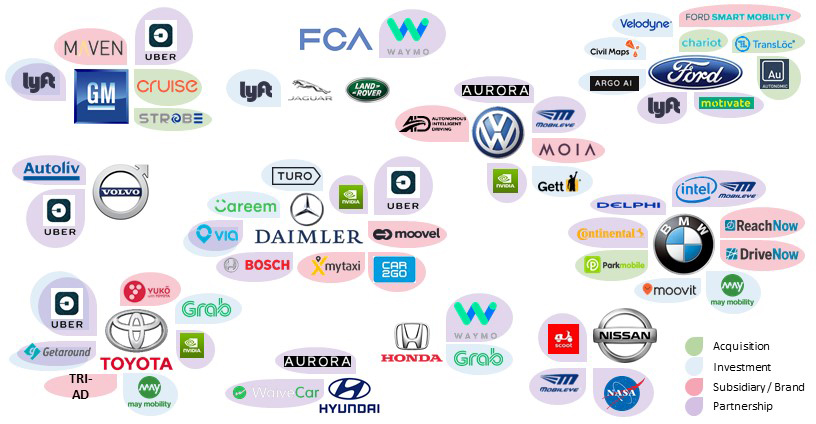‘One Plus One Equals Three’ is the title of a 1927 German silent film as well as a book by Dave Trott on creative thinking and creative writing. ‘One Plus One Equals Three’ is also a phrase that illustrates what is happening within the automotive ecosystem.
Over the last few years and moving forward, automotive companies are partnering with businesses outside of the automotive industry to deliver offerings that bring two disparate technologies together to create a third solution that reinvents business models, generates additional revenue streams and cuts costs.
According to BearingPoint/Beyond, a European, independent management and technology consultancy:
If automotive and transport companies want to thrive in a digital, mobility-enamored world, partner ecosystems must become a vital component of their reinvented business models. This will allow them to put a greater emphasis on customer relationships as the motor for innovation to create compelling new digital services formed through partner ecosystems which not only meet customer needs but drive them forward – while also being harder for competitors to simply copy.
Unexpected partnerships are bringing the automotive industry together with insurance, entertainment and hospitality companies, just to name few. For example:
- Ford has a deal with Liberty Mutual Insurance offering insurance discounts to customers who drive a Ford connected vehicle. On a consumer opt-in basis, Liberty Mutual is able to access data from Ford’s connected cars to assess driving habits and decrease auto insurance premiums based on good driving.
- At CES this year, the electric vehicle manufacturer, BYTON, announced a wide range of partnerships bringing fresh content to an in-vehicle 48-inch display. ViacomCBS and Accuweather are two entertainment/information content companies working with BYTON to deliver an offering that enhances the driving experience.
- Uber has a deal with Hilton Worldwide enabling guests to set ride reminders, request vehicles to and from nearby locations as well as explore local scenes via a digital guide powered by Uber within the HHonors loyalty app.
Credit: Center for Automotive Research
For more than 100 years the auto industry was based on one company building a vehicle, one person buying it and one person driving it. Those days are over. One, single company cannot provide the new types of services and solutions desired by today’s consumer.
While collaboration is key to the successful disruption of the industry, it is not without challenges. Once companies agree to partner, the complexities to success range from go-to-market strategies, branding, revenue splits, and team coordination. Core to the success of the partnership is its fluidity through planning and execution as well as ensuring a common lexicon, common measures, and common processes to help companies from vastly different industries integrate, communicate and prosper.
The majority of these services and joint mobility offerings require integration of software components into complex, multi-supplier systems. The mindset of fluidity, dynamic environments and consistent measurement and processes is also true for software integration and the dependencies and compatibility challenges that arise with software integration.
From a pure business perspective, the stronger the dependency between colleagues, supply channels, and infrastructure the higher the probability change will cause challenges to the integrated service. Having insight into how these elements interact will help predict and prepare for change assuring a successful launch of the unified offering.
Similarly, the stronger the dependency between functional components and software lines-of-code, the higher the probability change in one component will have a carry-on effect on other functional components in the system. Having insight into how these elements interact will help predict and prepare for change, again, assuring a successful launch of the unified solution.
Aurora Labs is the company leading this new dimension of providing transparency into the relationships and behavior between functional components in complex and dynamic automotive systems. The actionable data created enable the automotive ecosystem to predict, fix and validate software behavior, the foundation of all new mobility systems and services.







 11 min read
11 min read
